Ancient Chinese Ingenuity Created Sophisticated Time Keeping Machines: Proof Of Remarkable Ancient Knowledge
A. Sutherland - AncientPages.com - In 727, the world's first mechanical clock was constructed by the Chinese Tantric Buddhist monk and mathematician Yixing (683-727). It was also an astronomical instrument.
The Chinese invention of a mechanical clock that is considered to be the 'most venerable of all escapement clocks', predates the European mechanical clock by several centuries.
It's worth mentioning that an escapement is the crucial component of a mechanical clock, that regulates the driving force of the timepiece and allows a rotating wheel to turn slowly, continuously, and with constant speed.
Left: The original diagram of Su's book showing the inner workings of his clocktower. Credit: Public Domain. Right: A scale model of Su Song's astronomical clock tower. Credit: Public Domain
Today no one doubts that the invention of the mechanical clock was one of the greatest scientific and technological achievements.
The clock is described in Robert Temple's very interesting book The Genius of China: 3,000 Years of Science, Discovery, and Invention as follows:
"[It] was made in the image of the round heavens and on it were shown the lunar mansions in their order, the equator and the degrees of the heavenly circumference.
Water, flowing into scoops, turned a wheel automatically, rotating it one complete revolution in one day and night [24 hours].
Besides this, there were two rings fitted around the celestial sphere outside, having the sun and moon threaded on them, and these were made to move in circling orbit... And they made a wooden casing the surface of which represented the horizon, since the instrument was half sunk in it.
Credit: Robert Temple
It permitted the exact determinations of the time of dawns and dusks, full and new moons, tarrying and hurrying. Moreover, there were two wooden jacks standing on the horizon surface, having one a bell and the other a drum in front of it, the bell being struck automatically to indicate the hours, and the drum being beaten automatically to indicate the quarters.
All these motions were brought about by machinery within the casing, each depending on wheels and shafts, hooks, pins and interlocking rods, stopping devices and locks checking mutually [i.e. the escapement]".
Yixing's clock was, like water clocks, subject to the vicissitudes of the weather. In order to keep the water in them from freezing, torches generally burnt beside them.
See also:
Highly Advanced Robots In Ancient China
The Lycurgus Cup: Fascinating Artifact That Reveals Prehistoric Knowledge Of Nanotechnology
Ancient Sophisticated Technologies: Mercury-Based Gilding That We Still Can’t Reach
Merkhet – An Ancient Egyptian Timekeeping Instrument
Therefore, in the next great and far more complex clock of which we have accounts in China, mercury was substituted for water because of the freezing problem, and one of the best examples is a much larger clock built by Zhang Sixun in 976 AD and described in this way:
"... a tower of three storeys each over 3 metres in height, within which was concealed all the machinery. It was round at the top to symbolize the heavens and square at the bottom to symbolize the earth. Below there was set up the lower wheel, lower shaft, and the framework base.
There were also horizontal wheels, vertical wheels fixed sideways, and slanting wheels; bearings for fixing them in place; a central stopping device and a smaller stopping device [i.e. the escapement] with a main transmission shaft. Seven jacks rang bells on the left, struck a large bell on the right and beat a drum in the middle to indicate clearly the passing of the quarter-hours.
Water-powered armillary and celestial tower. Credit: Natural Museum of National Science Taiwan
Each day and night [i.e. each 24 hours] the machinery made one complete revolution, and the seven luminaries moved their positions around the ecliptic. Twelve other wooden jacks were also made to come out at each of the doublehours, one after the other, bearing tablets indicating the time..."
And so it was time for the "Cosmic Engine", the greatest of all Chinese medieval clocks built by the astronomer Su Song in 1092. This device was an astronomical clock tower more than 10 metres high, like the previous one of Zhang.
Su Song's tower was additionally equipped with a huge bronze power-driven astronomical instrument called an armillary sphere, with which one could observe the positions of the stars.
A celestial globe inside the tower - that could always demonstrate planetarium - turned in synchronization with this sphere above, so that the two could constantly be compared. We are told that the observations made on the demonstrational globe inside and by the observational sphere above "agreed like the two halves of a tally".
On the front of the tower was a pagoda structure of five storeys, each having a door through which mannikins and jacks appeared ringing bells and gongs and holding tablets to indicate the hours and other special times of the day and night. All of these time-indicators were operated by the same giant clock machinery which simultaneously turned the sphere and the globe.
Knowledge of the principles of Su Song's clock spreading to Europe led to the development of mechanical clocks in the West two centuries later.
Written by – A. Sutherland - AncientPages.com Senior Staff Writer
Copyright © AncientPages.com All rights reserved. This material may not be published, broadcast, rewritten or redistributed in whole or part without the express written permission of AncientPages.com
Expand for referencesMore From Ancient Pages
-
 Wilhelm Tell: Famous Legendary Crossbowman And Swiss Patriot – Symbol Of Freedom And Dignity
Featured Stories | Nov 2, 2016
Wilhelm Tell: Famous Legendary Crossbowman And Swiss Patriot – Symbol Of Freedom And Dignity
Featured Stories | Nov 2, 2016 -
 Sleipnir: Eight-Legged Horse With Supernatural Strength That Belonged To God Odin
Featured Stories | Mar 21, 2017
Sleipnir: Eight-Legged Horse With Supernatural Strength That Belonged To God Odin
Featured Stories | Mar 21, 2017 -
 Translated Ancient Text Offers Evidence Of An Unknown Sophisticated Civilization Present In All Corners Of The World
Ancient Mysteries | Sep 18, 2022
Translated Ancient Text Offers Evidence Of An Unknown Sophisticated Civilization Present In All Corners Of The World
Ancient Mysteries | Sep 18, 2022 -
 Hesperides – Greek Nymphs Who Guarded Fabled Garden With Divine Apples Of Immortality
Featured Stories | Jun 4, 2020
Hesperides – Greek Nymphs Who Guarded Fabled Garden With Divine Apples Of Immortality
Featured Stories | Jun 4, 2020 -
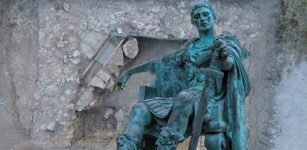 Major Discovery Of Ancient Roman Temple – Largest Evidence Ever Of The Imperial Cult
Archaeology | Jan 5, 2024
Major Discovery Of Ancient Roman Temple – Largest Evidence Ever Of The Imperial Cult
Archaeology | Jan 5, 2024 -
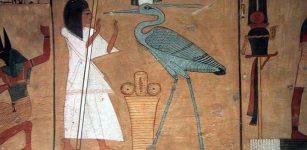 Mythical Egyptian Bennu Bird And Deity
Egyptian Mythology | Jun 5, 2016
Mythical Egyptian Bennu Bird And Deity
Egyptian Mythology | Jun 5, 2016 -
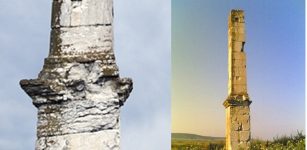 Archaeologists Will Excavate Unique Ancient Roman Obelisk Near Lesicheri, Bulgaria
Archaeology | Apr 8, 2016
Archaeologists Will Excavate Unique Ancient Roman Obelisk Near Lesicheri, Bulgaria
Archaeology | Apr 8, 2016 -
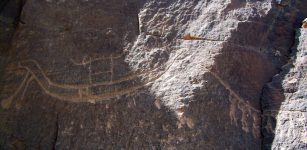 Pre-Pharaonic Petroglyphs Used To Study Egyptian Cult Of The Gods
Archaeology | Mar 15, 2023
Pre-Pharaonic Petroglyphs Used To Study Egyptian Cult Of The Gods
Archaeology | Mar 15, 2023 -
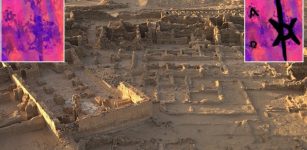 Rare Medieval Tattoo Depicting A Christogram Unearthed In Ghazali, Sudan
Archaeology | Nov 9, 2023
Rare Medieval Tattoo Depicting A Christogram Unearthed In Ghazali, Sudan
Archaeology | Nov 9, 2023 -
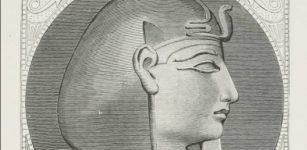 Pharaoh Merneptah – His Giant Sarcophagus And Unique Victory Stele
Featured Stories | Apr 17, 2018
Pharaoh Merneptah – His Giant Sarcophagus And Unique Victory Stele
Featured Stories | Apr 17, 2018 -
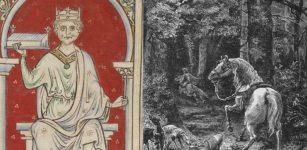 Was King William II Murdered In The New Forest?
Featured Stories | Aug 5, 2021
Was King William II Murdered In The New Forest?
Featured Stories | Aug 5, 2021 -
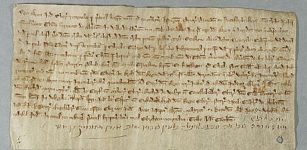 York’s Thriving Medieval Jewish Community – New Study
Archaeology | Aug 22, 2023
York’s Thriving Medieval Jewish Community – New Study
Archaeology | Aug 22, 2023 -
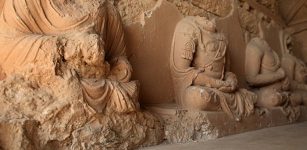 Takshashila: Renowned Learning Center That Attracted Buddhist Masters, Disciples And Students Of The World
Featured Stories | Jul 23, 2016
Takshashila: Renowned Learning Center That Attracted Buddhist Masters, Disciples And Students Of The World
Featured Stories | Jul 23, 2016 -
 Who Was The Mysterious Old Leather Man?
Featured Stories | Sep 1, 2021
Who Was The Mysterious Old Leather Man?
Featured Stories | Sep 1, 2021 -
 Domovik (Domovoi): Household Spirit In Ancient Slavic Beliefs
Featured Stories | Apr 3, 2016
Domovik (Domovoi): Household Spirit In Ancient Slavic Beliefs
Featured Stories | Apr 3, 2016 -
 Why Did King Solomon Hide Advanced Technology In A Secret Place? – The Great Deception – Part 2
Ancient Mysteries | Apr 3, 2021
Why Did King Solomon Hide Advanced Technology In A Secret Place? – The Great Deception – Part 2
Ancient Mysteries | Apr 3, 2021 -
 Incredible 5,000-Year-Old Temple Complex In Orkney Could Re-Write History Of Scotland
Civilizations | Jul 30, 2014
Incredible 5,000-Year-Old Temple Complex In Orkney Could Re-Write History Of Scotland
Civilizations | Jul 30, 2014 -
 King Lud – Mysterious Founder Of London And His Connection To The Tuatha De Danann
Featured Stories | Oct 21, 2021
King Lud – Mysterious Founder Of London And His Connection To The Tuatha De Danann
Featured Stories | Oct 21, 2021 -
 Archaeological Site Along The Nile Reveals The Nubian Civilization That Flourished In Ancient Sudan
Civilizations | Apr 14, 2022
Archaeological Site Along The Nile Reveals The Nubian Civilization That Flourished In Ancient Sudan
Civilizations | Apr 14, 2022 -
 Experts Restore Ceremonial Boat Of Pharaoh Cheops At On-Site Antiquities Laboratory
Archaeology | Mar 30, 2017
Experts Restore Ceremonial Boat Of Pharaoh Cheops At On-Site Antiquities Laboratory
Archaeology | Mar 30, 2017



